Land Rover Range Rover vs VW Tayron – Differences & prices compared
Two cars, one duel: Land Rover Range Rover meets VW Tayron.
Which one wins in performance, efficiency and value for money? Find out now!
Costs and Efficiency:
Looking at overall running costs, both models reveal some interesting differences in everyday economy.
VW Tayron has a convincingly advantage in terms of price – it starts at 39000 £, while the Land Rover Range Rover costs 122700 £. That’s a price difference of around 83764 £.
Fuel consumption also shows a difference: VW Tayron manages with 0.40 L and is therefore clearly more efficient than the Land Rover Range Rover with 2.70 L. The difference is about 2.30 L per 100 km.
As for range, the VW Tayron performs minimal better – achieving up to 126 km, about 9 km more than the Land Rover Range Rover.
Engine and Performance:
Power, torque and acceleration say a lot about how a car feels on the road. This is where you see which model delivers more driving dynamics.
When it comes to engine power, the Land Rover Range Rover has a clearly edge – offering 615 HP compared to 272 HP. That’s roughly 343 HP more horsepower.
In acceleration from 0 to 100 km/h, the Land Rover Range Rover is distinct quicker – completing the sprint in 4.50 s, while the VW Tayron takes 6.10 s. That’s about 1.60 s faster.
In terms of top speed, the Land Rover Range Rover performs minimal better – reaching 261 km/h, while the VW Tayron tops out at 240 km/h. The difference is around 21 km/h.
There’s also a difference in torque: Land Rover Range Rover pulls clearly stronger with 800 Nm compared to 400 Nm. That’s about 400 Nm difference.
Space and Everyday Use:
Cabin size, boot volume and payload all play a role in everyday practicality. Here, comfort and flexibility make the difference.
Seats: Land Rover Range Rover offers noticeable more seating capacity – 7 vs 5.
In curb weight, VW Tayron is clearly lighter – 1682 kg compared to 2504 kg. The difference is around 822 kg.
In terms of boot space, the VW Tayron offers minimal more room – 885 L compared to 818 L. That’s a difference of about 67 L.
In maximum load capacity, the Land Rover Range Rover performs hardly perceptible better – up to 2176 L, which is about 86 L more than the VW Tayron.
When it comes to payload, Land Rover Range Rover distinct takes the win – 846 kg compared to 566 kg. That’s a difference of about 280 kg.
Who comes out on top?
Overall, the VW Tayron shows itself to be is largely superior and secures the title of DriveDuel Champion.
It convinces with the more balanced overall package and proves to be the more versatile choice for everyday use.
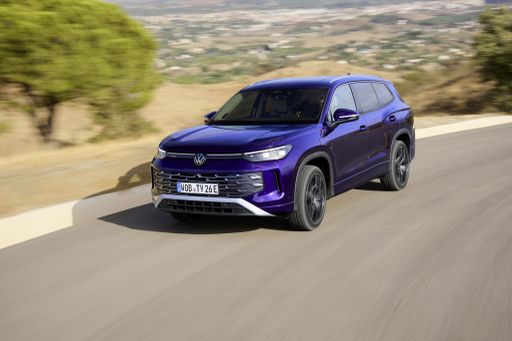
VW Tayron
Land Rover Range Rover
The Land Rover Range Rover epitomises luxury and capability in the realms of off-road vehicles. Its elegant design seamlessly marries sophistication with ruggedness, making it equally suitable for urban environments and challenging terrains. Inside, passengers are treated to a plush interior with premium materials and cutting-edge technology that ensure a comfortable and connected driving experience.
details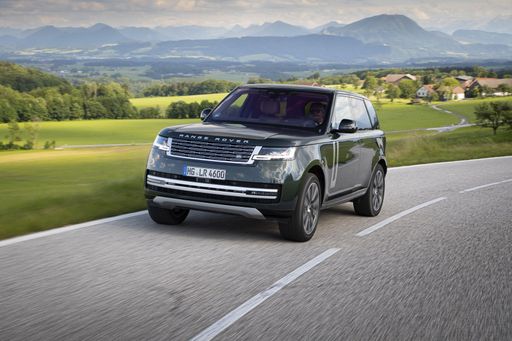 @ media.landrover.com
@ media.landrover.com
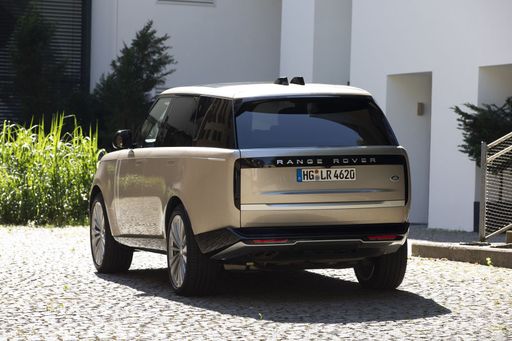 @ media.landrover.com
@ media.landrover.com
 @ media.landrover.com
@ media.landrover.com
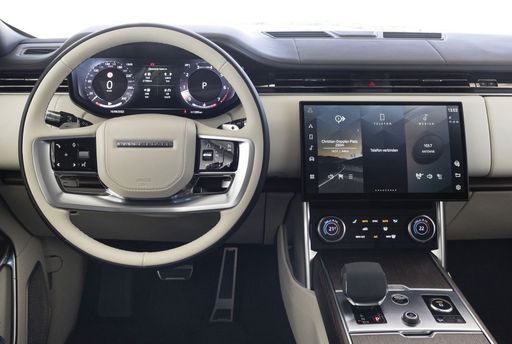 @ media.landrover.com
@ media.landrover.com
VW Tayron
The Tayron stands out as a stylish and versatile SUV that expertly blends form and function. With its spacious interior and modern design, it caters to families and adventure seekers alike, making every journey enjoyable. Equipped with advanced technology and safety features, the Tayron promises a driving experience that is both secure and exhilarating.
details @ volkswagen-newsroom.com
@ volkswagen-newsroom.com
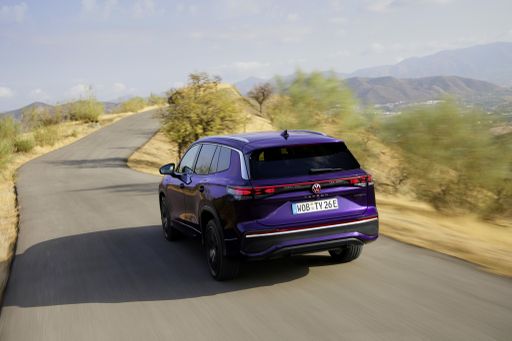 @ volkswagen-newsroom.com
@ volkswagen-newsroom.com
 @ volkswagen-newsroom.com
@ volkswagen-newsroom.com
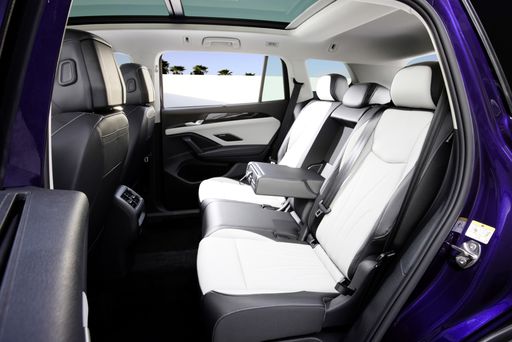 @ volkswagen-newsroom.com
@ volkswagen-newsroom.com

|

|
|
|
|
Costs and Consumption |
|
|---|---|
|
Price
122700 - 244700 £
|
Price
39000 - 52600 £
|
|
Consumption L/100km
2.7 - 11.7 L
|
Consumption L/100km
0.4 - 8.5 L
|
|
Consumption kWh/100km
-
|
Consumption kWh/100km
-
|
|
Electric Range
116 - 117 km
|
Electric Range
117 - 126 km
|
|
Battery Capacity
31.80 kWh
|
Battery Capacity
19.70 kWh
|
|
co2
62 - 265 g/km
|
co2
9 - 192 g/km
|
|
Fuel tank capacity
71 - 90 L
|
Fuel tank capacity
45 - 58 L
|
Dimensions and Body |
|
|---|---|
|
Body Type
Off-Roader
|
Body Type
SUV
|
|
Seats
5 - 7
|
Seats
5
|
|
Doors
5
|
Doors
5
|
|
Curb weight
2504 - 2810 kg
|
Curb weight
1682 - 1948 kg
|
|
Trunk capacity
212 - 818 L
|
Trunk capacity
705 - 885 L
|
|
Length
5052 - 5258 mm
|
Length
4792 mm
|
|
Width
2047 mm
|
Width
1853 - 1866 mm
|
|
Height
1870 mm
|
Height
1666 - 1668 mm
|
|
Max trunk capacity
1841 - 2176 L
|
Max trunk capacity
1915 - 2090 L
|
|
Payload
589 - 846 kg
|
Payload
489 - 566 kg
|
Engine and Performance |
|
|---|---|
|
Engine Type
Plugin Hybrid, Petrol MHEV, Diesel MHEV
|
Engine Type
Petrol MHEV, Plugin Hybrid, Diesel, Petrol
|
|
Transmission
Automatic
|
Transmission
Automatic
|
|
Transmission Detail
Automatic Gearbox
|
Transmission Detail
Dual-Clutch Automatic
|
|
Drive Type
All-Wheel Drive
|
Drive Type
Front-Wheel Drive, All-Wheel Drive
|
|
Power HP
300 - 615 HP
|
Power HP
150 - 272 HP
|
|
Acceleration 0-100km/h
4.5 - 6.6 s
|
Acceleration 0-100km/h
6.1 - 9.7 s
|
|
Max Speed
218 - 261 km/h
|
Max Speed
204 - 240 km/h
|
|
Torque
650 - 800 Nm
|
Torque
250 - 400 Nm
|
|
Number of Cylinders
6 - 8
|
Number of Cylinders
4
|
|
Power kW
221 - 452 kW
|
Power kW
110 - 200 kW
|
|
Engine capacity
2997 - 4395 cm3
|
Engine capacity
1498 - 1984 cm3
|
General |
|
|---|---|
|
Model Year
2025
|
Model Year
2025
|
|
CO2 Efficiency Class
B, G
|
CO2 Efficiency Class
E, B, F, G
|
|
Brand
Land Rover
|
Brand
VW
|
What drive types are available for the Land Rover Range Rover?
Available configurations include All-Wheel Drive.
The prices and data displayed are estimates based on German list prices and may vary by country. This information is not legally binding.
